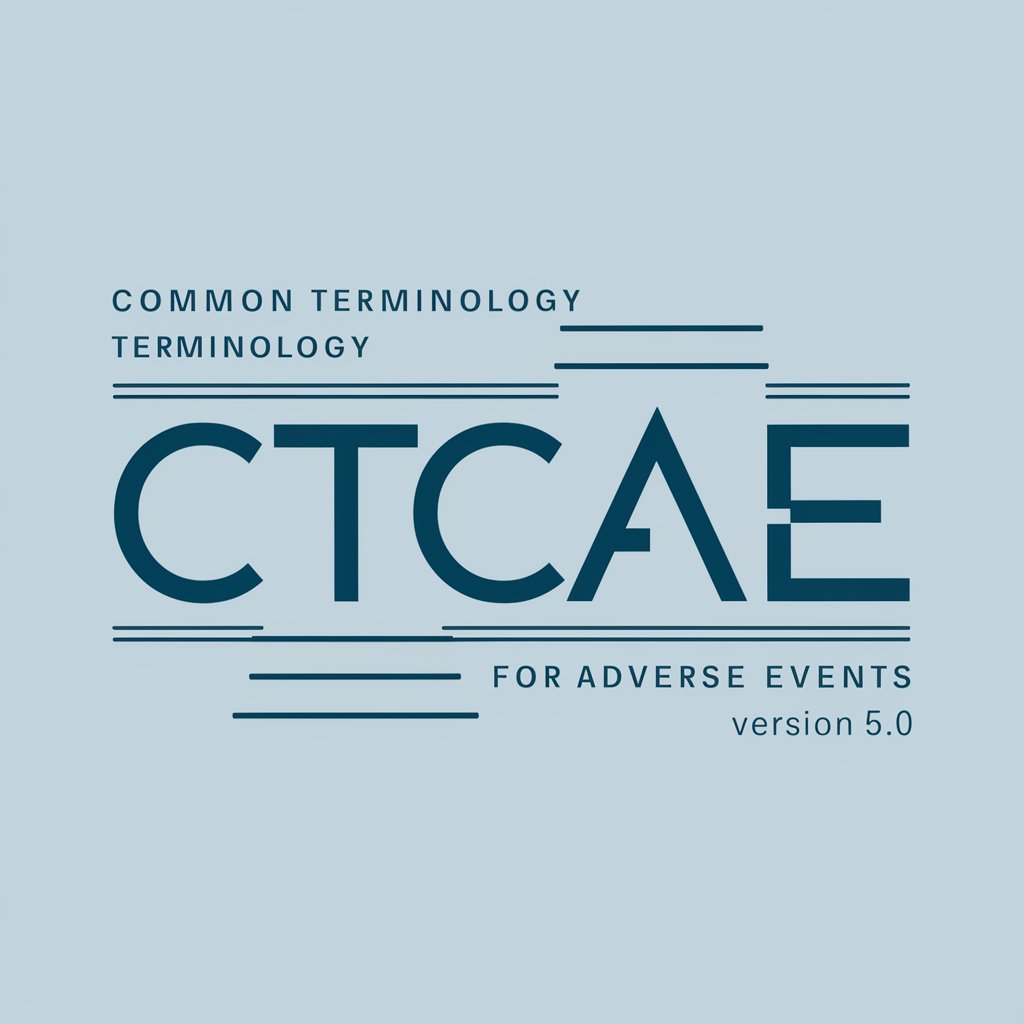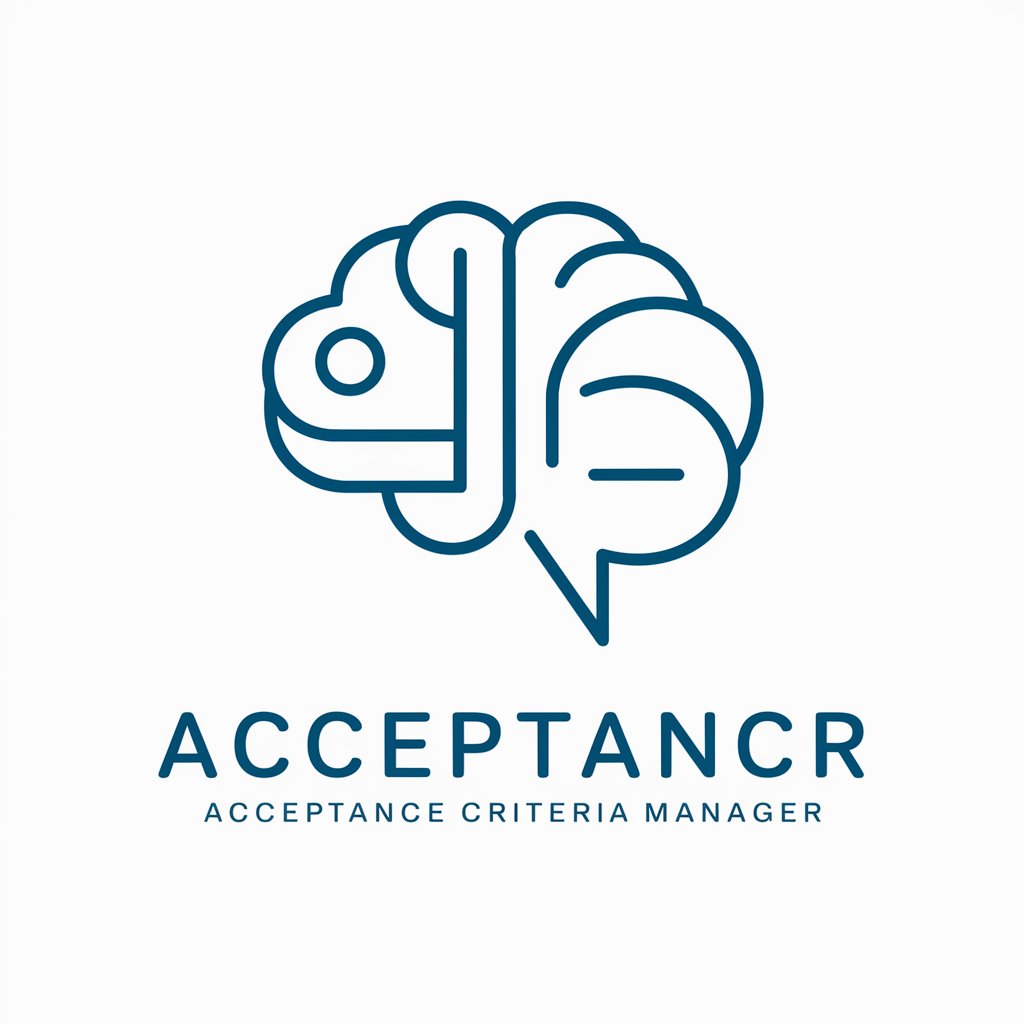Common Terminology Criteria for Adverse Events - Standardized Adverse Event Grading

Welcome to the CTCAE guide. Let's navigate adverse event criteria together.
Standardizing Adverse Event Reporting with AI
What are the common adverse events reported in...
How does CTCAE v5.0 define the severity of...
Can you explain the grading system used in...
What are the key updates in CTCAE Version 5.0 regarding...
Get Embed Code
Introduction to Common Terminology Criteria for Adverse Events (CTCAE)
The Common Terminology Criteria for Adverse Events (CTCAE) is a standard framework designed by the U.S. National Cancer Institute for classifying and grading the severity of adverse events (AEs) associated with medical treatments, particularly in the context of clinical trials. It allows consistent documentation, assessment, and interpretation of AEs across different studies and healthcare settings. Each AE term in CTCAE is associated with a definition, grading scale, and sometimes navigational notes to aid in selection of the most accurate term. For example, the term 'Anemia' is graded from mild severity (Grade 1) where it's mostly asymptomatic, to severe (Grade 4) indicating life-threatening consequences, or not applicable (Grade 5, which is death in other contexts but is not used for conditions like Anemia). Powered by ChatGPT-4o。

Main Functions of CTCAE
Standardization of Adverse Event Reporting
Example
Using a universal language to describe AEs ensures consistency. For instance, 'Hemolytic Uremic Syndrome' consistently refers to a specific set of symptoms and outcomes across different reports and studies.
Scenario
In clinical trials, researchers can accurately compare safety profiles of medications by documenting AEs using CTCAE terms.
Grading Severity of Adverse Events
Example
Each AE term includes a grading scale from 1 to 5, reflecting increasing severity. For 'Cardiac arrhythmias', Grade 1 might involve mild symptoms without intervention, whereas Grade 4 could require urgent life-saving intervention.
Scenario
Healthcare providers can assess the impact of a treatment on a patient by observing the grade of reported AEs, which aids in making further treatment decisions.
Facilitating AE Management and Decision Making
Example
Navigational notes provide guidance on when to consider other potential AEs or when multiple AEs might be related, like linking 'Dysphagia' with potential 'Esophageal obstruction'.
Scenario
Doctors use these navigational aids to better understand complex cases and determine whether different symptoms might be related to a single underlying issue.
Ideal Users of CTCAE
Clinical Researchers
Researchers conducting clinical trials use CTCAE to document and report AEs in a standardized manner, ensuring reliable data on drug safety that can be compared across studies.
Healthcare Providers
Doctors, nurses, and other healthcare providers utilize CTCAE to recognize, grade, and manage AEs effectively during treatment, enhancing patient care through informed clinical decisions.
Regulatory Authorities
Regulatory bodies, such as the FDA, rely on CTCAE standards to evaluate drug safety profiles based on consistent AE reporting, influencing drug approval and monitoring processes.

Guidelines for Using the Common Terminology Criteria for Adverse Events
1
Visit yeschat.ai to initiate your experience without the need to log in or subscribe to ChatGPT Plus.
2
Familiarize yourself with the CTCAE document, focusing on the specific system organ classes (SOC) that are relevant to your field of research or clinical practice.
3
Identify adverse events using the descriptions provided in the CTCAE, which includes grading the severity from 1 (mild) to 5 (death).
4
Utilize the 'Navigational Notes' to assist in selecting the correct adverse event terms when documenting in medical records or research data.
5
Regularly refer to updates or changes in CTCAE versions as this tool evolves based on new medical research and findings.
Try other advanced and practical GPTs
HR Insight: Perfecting Selection Criteria
Automate and Refine Hiring with AI

Criteria Ranker AI
Empowering Decisions with AI

Logo Maker
Craft Your Brand Identity with AI

Scout
Empowering Research with AI

Feasibility Scout
AI-powered technical decision support

Web Scout
Empowering exploration with AI

Acceptance Criteria Manager
Craft precise, AI-powered acceptance criteria effortlessly.

Gherkin Acceptance Criteria
Simplify Acceptance with AI-Powered Gherkin

Ticket Writer - User Stories & Acceptance Criteria
AI-powered tool for generating technical user stories.
Fix or Replace It?
Smart decisions for your belongings.

音声入力した内容を構造化&箇条書きで整理くん
Transform speech into structured insights.

バイオテックリサーチプレゼンター
Transform Research into Visual Stories

Q&A on Common Terminology Criteria for Adverse Events
What is the purpose of the CTCAE?
The CTCAE is used for documenting and grading the severity of adverse events in a standardized manner, which facilitates consistent reporting, analysis, and interpretation of data from medical treatments or procedures.
How is an adverse event graded according to the CTCAE?
Adverse events are graded on a scale from 1 to 5, with Grade 1 being mild and typically requiring no intervention, and Grade 5 resulting in death. Not all adverse events include all five grades.
Can CTCAE be used outside of oncology clinical trials?
Yes, while it is primarily developed for oncology, CTCAE is widely applicable in other medical fields for documenting adverse events due to its comprehensive medical and symptomatic coverage.
Are there electronic tools to help with CTCAE reporting?
Yes, there are software and electronic systems designed to facilitate the recording and reporting of adverse events using CTCAE standards, which help in maintaining accuracy and consistency.
How often is the CTCAE updated?
The CTCAE is periodically updated as new medical data becomes available and the scope of medical treatments expands. Each version reflects current understanding and regulatory requirements.
